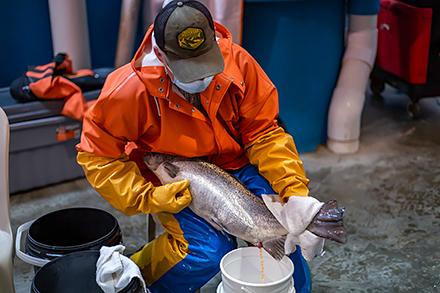
If you’re a fan of salmon, you’re not alone.
The fish that was once considered a luxury food is now one of the most popular seafoods in the western world. Locally, salmon is the most popular fish species in the United States.
Scientists and staff at the Agricultural Research Service’s (ARS) National Cold Water Marine Aquaculture Center (NCWMAC) in Franklin, ME, have been improving the amount and quality of America’s Atlantic salmon for nearly 20 years.
“Since 2003, the center has worked with stakeholders to produce a North American strain of Atlantic salmon that exhibits traits producers and consumers want,” said Brian Peterson, NCWMAC research leader.
NCWMAC’s selective breeding program focuses on traits such as carcass weight, sea lice resistance, fatty acid profile, and fillet color. The center also helps North American producers compete with international producers by conducting disease and nutrition research.
According to Peterson, the NCWMAC uses traditional non-GMO breeding methods to raise about 150 families of fish each year that have been selected for improved growth and sea lice resistance. Sea lice are small crustations that attach themselves to the skin of fish and are not harmful to humans. Each year, the U.S. aquaculture industry receives a limited amount of salmon eggs from these families. These eggs are then raised by commercial farmers, who then spawn the fish that are commercially reared in net pens.
Americans consume nearly 450 tons of salmon each year, and ARS is helping keep the nets full. That’s good eatin’! – By Scott Elliott, ARS Office of Communications


